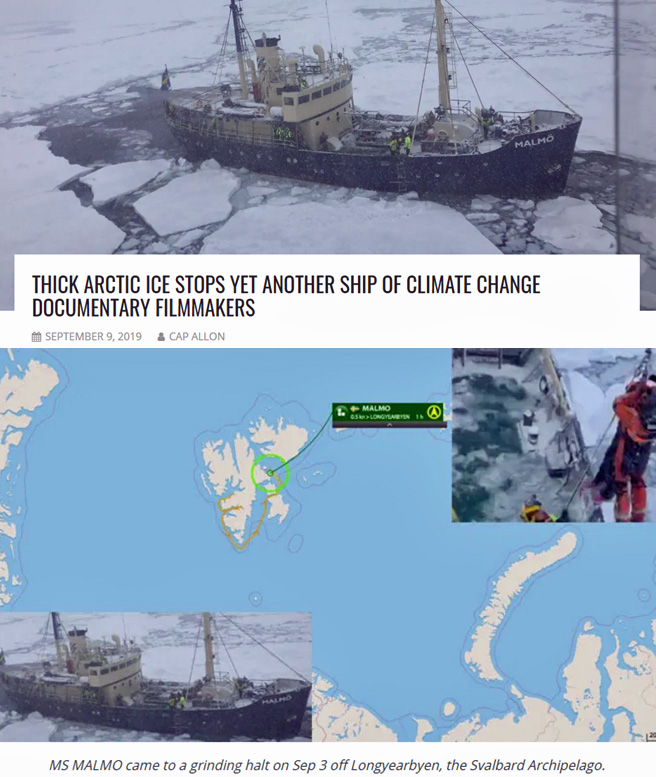Today, the region north of Svalbard is encrusted with sea ice for all but a few weeks per year and summer sea surface temperatures (SSTs) hover near 0°C. Scientists (Brice et al., 2020) have determined this same region had sea ice-free conditions last about 10 months per year while SSTs reached 4°C just ~4100 years ago.
In early September, 2019, Arctic explorers once again needed to be rescued from the “disappearing” sea ice that had captured their ship in central Svalbard. This region is presently free of sea ice for only a few weeks per year (late August).

Image Source: electroverse.net
Observational measurements (Rösel et al., 2018) of the sea ice north of Svalbard indicate the ice has actually been significantly thicker in recent years (1.56 to 1.65 meters in 2015, 2017) than it was in 1955 (0.94 of a meter).
Image Source: Rösel et al., 2018
A study site northeast of Svalbard (Brice et al., 2020) reveals today’s sea surface temperatures of “<0°C” are at least 4°C colder than they were just a few thousand years ago, when the Arctic was sea ice free for all but “a couple of months” every year. Notice the graphics that show today’s sea ice monthly duration (~11 months per year) and summer sea surface temperatures (zero degrees Celsius) are among the highest and lowest (respectively) of the Holocene.
Image Source: Brice et al., 2020
Per Brice et al. (2020), the much warmer Arctic climate and absence of sea ice reached an “optimum” during “the interval around 3000-2000 cal yr BP” such that late Stone Age human settlements north of Svalbard were “feasible”.



